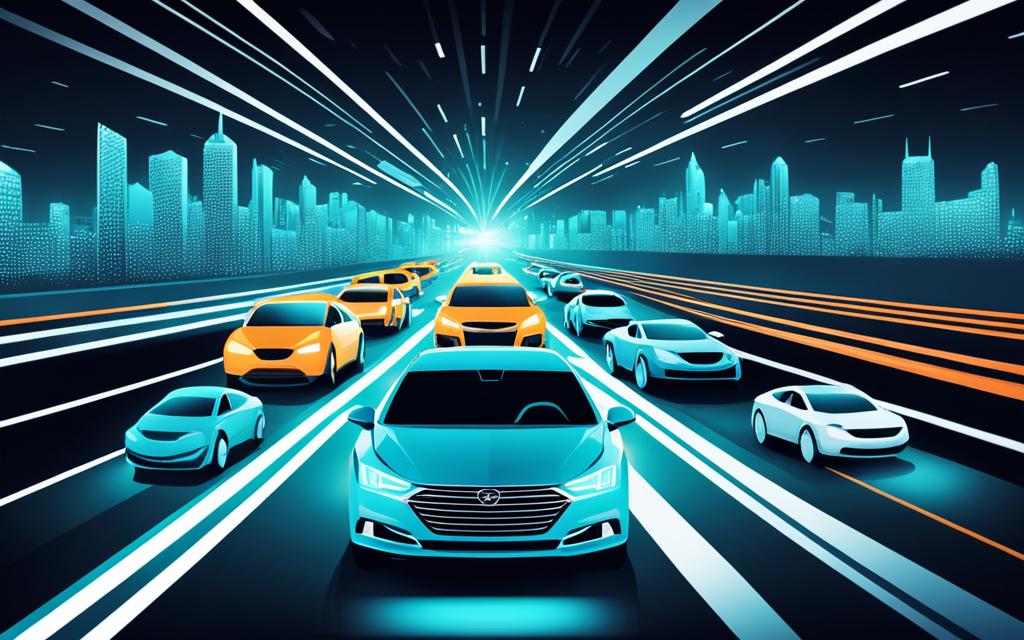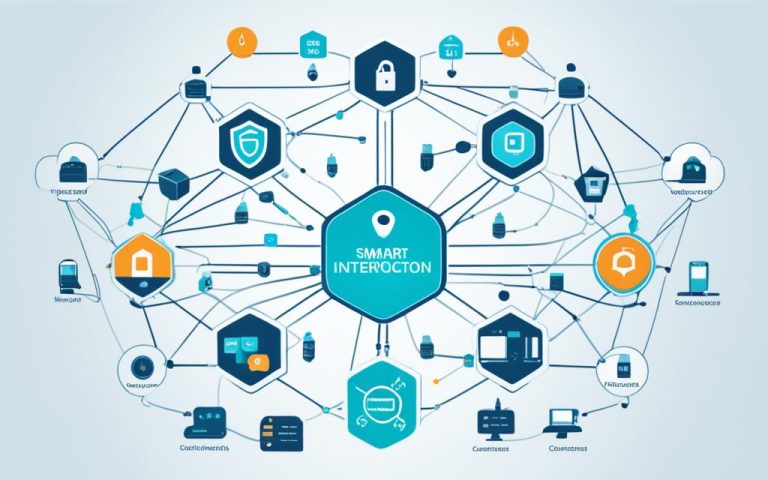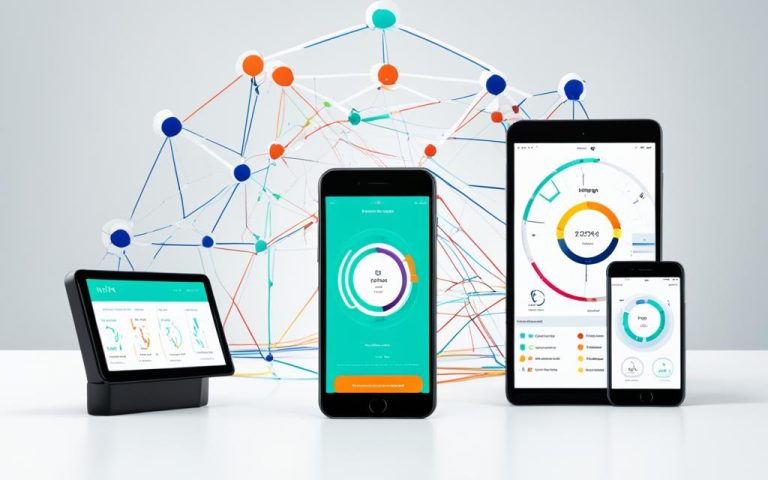A study from Rethink Research predicts that the number of connected cars will triple from 279 million in 2022 to 829 million in 2030, driven by the trend of embedded mobile network access becoming standard in cars. This surge in in-car connectivity is fueled by the rise of vehicle personal area networks, which enable seamless communication and integration between various devices and systems within a vehicle.
The advent of 5G connectivity is expected to amplify the capabilities of these vehicle personal area networks, unlocking a new era of connected vehicles. With faster speeds and lower latency, 5G will enable a host of advanced applications such as ultra HD streaming and more sophisticated advanced driver assistance systems (ADAS), enhancing both the driving experience and safety measures.
Furthermore, the growing demand for connected cars has also ignited the emergence of the car connectivity market, which is projected to quadruple in revenues to the tune of $244 billion by 2030. One of the major contributors to this market expansion is the integration of C-V2X (cellular vehicle-to-everything) technology, which facilitates local vehicle-to-vehicle (V2V) and vehicle-to-infrastructure (V2I) communication, paving the way for enhanced road safety and traffic efficiency.
In this article, we explore the rise of vehicle personal area networks and the transformative impact they are having on the automotive industry. We delve into the evolution of in-vehicle networks from traditional domain architectures to the more streamlined zonal architectures, empowered by technologies such as Automotive Ethernet.
We also examine the role of 5G connectivity in driving the future of in-car connectivity, enabling a range of new functionalities and revolutionizing the way vehicles interact with their surroundings. Furthermore, we delve into the concept of 5G edge zones and their significance in delivering faster response times and customized network services for critical use cases in next-gen transportation.
As we delve into the various facets of vehicle personal area networks and connected cars, we highlight the pioneering efforts of AT&T as a leader in the field, pushing the boundaries of innovation and establishing itself as a driving force in the connected car and IoT space. With their extensive network coverage and expertise, AT&T is at the forefront of shaping the future of transportation.
The Evolution of In-Vehicle Networks: From Domain to Zonal Architectures
In-vehicle networks are undergoing a significant transformation, moving away from traditional domain architectures towards more streamlined and efficient zonal architectures. This shift is driven by the need for simplified and faster communication within vehicles, resulting in improved performance and enhanced functionality. With the advent of advanced driver assistance systems (ADAS) and autonomous driving, in-vehicle networks must support higher-speed data transfer and real-time control.
Legacy vehicles often incorporate a mix of communication protocols and connectivity options, including Bluetooth, USB, LTE, and MIPI. This diverse combination presents challenges in terms of complexity, compatibility, and interoperability. To overcome these hurdles, automotive engineers and manufacturers are adopting zonal architectures to create a more cohesive and standardized network environment.
One of the key technologies driving the evolution of in-vehicle networks is Automotive Ethernet. As an emerging communication protocol, Automotive Ethernet offers several advantages over traditional options such as CAN (Controller Area Network) and LIN (Local Interconnect Network). Automotive Ethernet provides higher bandwidth, lower weight, and reduced power consumption, making it an ideal choice for zonal architectures. By leveraging Automotive Ethernet, vehicle manufacturers can create a more efficient and homogeneous network infrastructure.
The transition from domain to zonal architectures not only simplifies in-vehicle communication but also enables faster data exchange, optimizing the performance of various vehicle systems and components. This evolution paves the way for enhanced connectivity, supporting advanced features such as adaptive cruise control, lane-keeping assist, and collision avoidance.
“The evolution of in-vehicle networks from domain to zonal architectures is a crucial step towards enabling the next generation of connected vehicles. By standardizing communication protocols and consolidating wiring, automotive engineers can enhance the overall performance and functionality of modern cars.”
To illustrate the transition from domain to zonal architectures, the table below provides a comparison between the two:
| Domain Architectures | Zonal Architectures |
|---|---|
| Complex network structure | Simplified network structure |
| Multiple protocols and wiring | Fewer protocols and wiring |
| Increased complexity and maintenance | Reduced complexity and maintenance |
| Less efficient data transfer | Faster data transfer |
| Interoperability challenges | Improved interoperability |
As in-vehicle networks continue to evolve, the transition towards zonal architectures is expected to accelerate, providing a solid foundation for the future of connected cars and autonomous driving. By adopting standardized communication protocols, such as Automotive Ethernet, the automotive industry can achieve greater integration, efficiency, and innovation in vehicle connectivity.
The Growing Impact of 5G on In-Car Connectivity
5G technology is revolutionizing in-car connectivity, unlocking a plethora of innovative functionalities and transforming the driving experience. With its ability to facilitate lightning-fast communication and enable seamless connectivity, 5G is driving the development of connected cars and paving the way for the future of transportation.
One of the key advantages of 5G in in-car connectivity is its capability to enable vehicle-to-vehicle (V2V) communication. Through 5G networks, vehicles can exchange real-time information with each other, sharing data about traffic conditions, hazards, and other relevant details. This communication empowers drivers with enhanced situational awareness, enabling them to make informed decisions and improving overall road safety.
Furthermore, 5G facilitates vehicle-to-infrastructure (V2I) communication, allowing cars to interact with traffic lights, road sensors, and other infrastructure elements. This connectivity enables vehicles to receive real-time information about traffic signals, congestion, and road conditions, optimizing routes and ensuring smoother and more efficient journeys.
Connected cars powered by 5G connectivity form an integral part of the Internet of Things (IoT) ecosystem. They can be seamlessly integrated into the larger network, contributing to the massive expansion of the IoT. By 2030, it is projected that the number of connected cars will reach 2.5 billion, clearly indicating the growing demand for data consumption and end-to-end connectivity in the transportation industry.
With the support of 5G, connected cars can provide real-time warnings and alerts, delivering crucial information to drivers and occupants. By leveraging the power of 5G networks, these vehicles can send immediate notifications about road conditions, accidents, and potential hazards, enhancing safety and minimizing risks on the road.
“The expansion of 5G will support massive IoT connections in cars, with the number of connected cars expected to reach 2.5 billion by 2030.”
The impact of 5G on in-car connectivity goes beyond safety and communication. It also enables faster and more efficient transportation systems. With 5G-enabled connected cars, drivers can interact with smart intersections, receiving real-time updates on optimized traffic signals and advanced routing information.
Benefits of 5G in In-Car Connectivity:
- Seamless vehicle-to-vehicle (V2V) communication
- Enhanced vehicle-to-infrastructure (V2I) communication
- Integration into the Internet of Things (IoT) ecosystem
- Real-time warning messages and alerts
- Interaction with smart intersections
- Faster and safer transportation
With the demand for connected cars and data consumption per vehicle on the rise, the importance of 5G in in-car connectivity cannot be overstated. As the transportation industry continues to evolve, 5G technology provides the foundation for a more connected, efficient, and secure future.
The Role of 5G Edge Zones in Next-Gen Transportation
AT&T is paving the way for next-gen transportation with their innovative approach to 5G edge zones. These zones play a crucial role in enhancing connectivity and enabling faster response times, thereby supporting critical use cases in the transportation industry such as assisted driving and hazard avoidance.
By bringing network services closer to the user, 5G edge zones create a more efficient and seamless experience for drivers and passengers alike. The customizable network services offered in these zones are tailored to meet the specific requirements of different use cases, taking into consideration factors such as response time, bandwidth, and security.
As transportation becomes increasingly connected and software-defined, the demand for specialized network services that leverage the strengths of 5G, such as low latency and enhanced security, continues to grow. AT&T’s roadmap for the future focuses on meeting the evolving needs of a connected transportation ecosystem, spanning from the assembly line to in-vehicle services and beyond.
In summary, 5G edge zones are instrumental in achieving end-to-end connectivity and delivering customized network services to support the critical functions of next-gen transportation. AT&T’s commitment to innovating in this space reinforces their position as a leader in revolutionizing the future of the transportation industry.

Benefits of 5G Edge Zones in Next-Gen Transportation
- Reduced latency for faster response times
- Support for critical use cases like assisted driving and hazard avoidance
- Customizable network services based on specific use cases
- Enhanced security and data privacy
- Improved reliability and efficiency in transportation operations
Case Study: Assisted Driving
“Thanks to 5G edge zones, our assisted driving feature can analyze and process real-time data with minimal delay, enabling quick response to potential hazards and ensuring the safety of our passengers.”
AT&T Leading the Way in Connected Cars and IoT
AT&T has established itself as a leader in the world of connected cars and IoT, leveraging its extensive experience and strong partnerships with automakers. With a commitment to providing reliable and efficient connectivity, AT&T connects more vehicles in the U.S. than any other wireless provider. The company’s expansive network coverage extends to cover more highways and roads, ensuring seamless connectivity for connected cars across the country.
AT&T’s focus goes beyond in-vehicle connectivity. They are dedicated to enabling end-to-end connectivity throughout the entire connected transportation ecosystem. This includes not just the vehicles themselves, but also dealerships, service lanes, gas stations, and logistics hubs.
By leveraging its expertise and network coverage, AT&T ensures that vehicles, the software running on them, and the systems that power them can all be connected securely and efficiently. This comprehensive approach to connectivity sets AT&T apart and drives transportation to the next level.
To illustrate AT&T’s leadership in the connected car space, below is a table highlighting some key aspects of their connected transportation ecosystem:
| Aspect | AT&T’s Leadership |
|---|---|
| Connected Cars | Connects more vehicles in the U.S. than any other wireless provider |
| Automaker Partnerships | Strong partnerships with leading automakers |
| Network Coverage | Covers more highways and roads for seamless connectivity |
| End-to-End Connectivity | Enables connectivity beyond in-vehicle, encompassing the entire transportation ecosystem |
AT&T’s dedication to connected cars and IoT positions them at the forefront of the industry, driving innovation and shaping the future of transportation.
With their unrivaled connectivity solutions and commitment to advancing the connected transportation ecosystem, AT&T continues to lead the way towards a seamless and integrated future of transportation.
Conclusion
Vehicle personal area networks and in-car connectivity are revolutionizing transportation, creating a smarter and more integrated driving experience. The rapid growth of connected cars, driven by the expansion of 5G and the transition to zonal architectures, is transforming vehicles into mobile hubs of connectivity.
The increased functionalities enabled by vehicle personal area networks, such as vehicle-to-vehicle communication and interaction with road infrastructure, are paving the way for safer and more efficient transportation. As AT&T leads the way in connected cars and IoT, the future of transportation looks promising, with end-to-end connectivity and customized network services driving the industry forward.
With more vehicles becoming connected and the demand for data consumption increasing, the role of vehicle personal area networks and 5G in shaping the future of transportation cannot be underestimated. The future of transportation is set to be connected, intelligent, and efficient, where vehicles seamlessly communicate with each other and the surrounding infrastructure, resulting in a safer and more enjoyable driving experience.
FAQ
What are vehicle personal area networks?
Vehicle personal area networks are networks within vehicles that enable various devices and systems to communicate with each other and with the outside world, providing a range of connectivity features and functionalities.
How does in-car connectivity work?
In-car connectivity allows vehicles to connect to the internet and communicate with other vehicles, infrastructure, and devices. This enables services such as real-time traffic information, remote diagnostics, entertainment streaming, and enhanced safety features.
What is the significance of 5G connectivity in cars?
5G connectivity plays a crucial role in enabling advanced functionalities in connected cars, such as vehicle-to-vehicle communication, interaction with traffic lights, and real-time data exchange with surrounding infrastructure. It also supports the expansion of IoT connections in vehicles and enhances the overall user experience.
What is C-V2X and how does it contribute to car connections?
C-V2X (Cellular Vehicle-to-Everything) is a variant of vehicle-to-everything connectivity that utilizes cellular networks. It enables vehicles to communicate with other vehicles, infrastructure, and pedestrians, enhancing safety, traffic efficiency, and overall driving experience. The growth of C-V2X is expected to contribute to the increase in car connections.
How is the car connectivity market expected to grow?
The car connectivity market is projected to experience significant growth, with the number of car connections expected to triple by 2030. Revenues derived from car connectivity are also predicted to quadruple, driven by factors such as the widespread adoption of embedded mobile network access, the rise of usage-based insurance models, and the expansion of value-added services.
What is the transition from domain to zonal architectures in in-vehicle networks?
The transition from domain to zonal architectures in in-vehicle networks involves shifting from a fragmented approach to a more integrated and simplified communication system. This transition aims to streamline communications within vehicles, reduce wiring complexity, and support higher-speed data transfer required for autonomous driving and advanced driver assistance systems (ADAS).
How does Automotive Ethernet contribute to zonal architectures in vehicles?
Automotive Ethernet is a key technology for zonal architectures in vehicles. It provides higher bandwidth, lower weight, and power consumption compared to traditional CAN networks. By leveraging Automotive Ethernet, vehicles can achieve faster and more reliable communication, supporting the requirements of advanced automotive systems and technologies.
What is the role of 5G in enabling end-to-end connectivity in cars?
5G technology enables end-to-end connectivity in cars, allowing vehicles to seamlessly communicate with each other, infrastructure, and various devices. This connectivity facilitates features such as real-time warning messages, interaction with smart intersections, and faster and safer transportation overall.
How does AT&T contribute to the connected car and IoT industry?
AT&T is a leader in the connected car and IoT space, with extensive experience and partnerships with automakers. They connect more vehicles in the U.S. than any other wireless provider and cover a significant portion of highways and roads. AT&T’s focus is on expanding connectivity beyond vehicles to the entire transportation ecosystem, offering secure and efficient network services throughout dealerships, service lanes, gas stations, and logistics hubs.
What is the future of transportation with vehicle personal area networks and 5G?
The future of transportation is being shaped by vehicle personal area networks and the expansion of 5G technology. These innovations enable a smarter and more integrated driving experience, with connected cars serving as mobile hubs of connectivity. The increased functionalities and capabilities of vehicle personal area networks and 5G connectivity are driving the industry towards safer, more efficient, and seamlessly connected transportation systems.



















